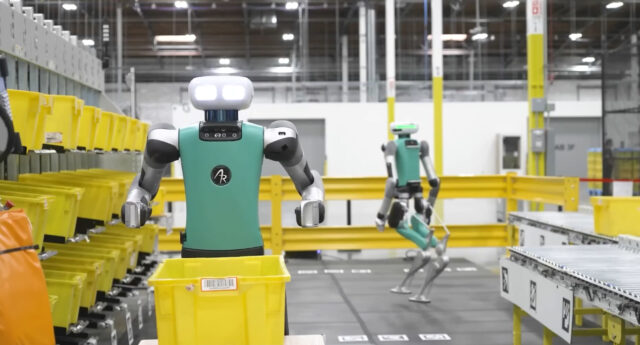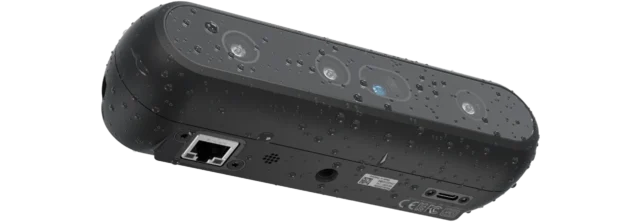Rise of the robots: RealSense and Nvidia team up on physical AI

RealSense and Nvidia have entered into a new partnership which is aimed at advancing physical AI through the deeper integration of depth-sensing cameras and high-performance robotics platforms.
This new initiative will combine RealSense’s new generation of AI cameras with Nvidia’s Jetson Thor computing hardware and simulation software, offering developers new ways to build humanoids and autonomous mobile robots.
SEE ALSO: Amazon unveils Vulcan, a package sorting, AI-powered robot with a sense of touch
RealSense’s new D555 depth camera includes the company’s v5 Vision Processor, on-chip Power over Ethernet (PoE), and a neural network engine that enhances image post-processing.

The camera has a ruggedized build, a global shutter, and an inertial measurement unit, alongside native ROS 2 support, to provide accurate and reliable depth perception, making it easier -- RealSense says -- to capture high-quality data in more demanding robotics environments.
Nvidia’s main contribution here is the Jetson Thor. Powered by the Blackwell GPU, the hardware comes with 128GB of memory and delivers up to 2070 FP4 teraflops of AI performance within a 130-watt power envelope.
Nvidia says that compared with the earlier Jetson Orin, Thor offers up to 7.5x the AI compute capacity and 3.5x better energy efficiency, providing headroom for large generative AI models and complex robotics workloads.
Smarter robots
By combining the RealSense D555 with Jetson Thor and Nvidia’s Holoscan Sensor Bridge, it’s hoped that developers can achieve near real-time sensor fusion with minimal latency -- humanoid and autonomous mobile robots depend on near instant perception feedback in order to operate safely in busy environments.
Another key element of the collaboration is Nvidia Isaac Sim, a simulation environment for building digital twins. Through direct support for RealSense cameras, developers can stream true depth and image data into Isaac Sim, speeding up testing and validation cycles.
“This initiative cements RealSense’s role as the perception platform of choice for AMRs and humanoids,” said Nadav Orbach, CEO of RealSense. “By providing native integration and performance optimizations with Nvidia Thor and Holoscan Sensor Bridge, we are accelerating the mainstream adoption of physical AI. Together, we are enabling the robotics industry to unlock the extraordinary potential of physical AI and drive the future of intelligent machines.”
Robotics developers often face hurdles when combining components from different vendors, from guaranteeing data compatibility to optimizing performance across systems. By aligning their technologies, the two companies hope to reduce complexity and deliver solutions that are easier to scale into production.
What do you think about the RealSense and Nvidia collaboration on physical AI? Let us know in the comments.
